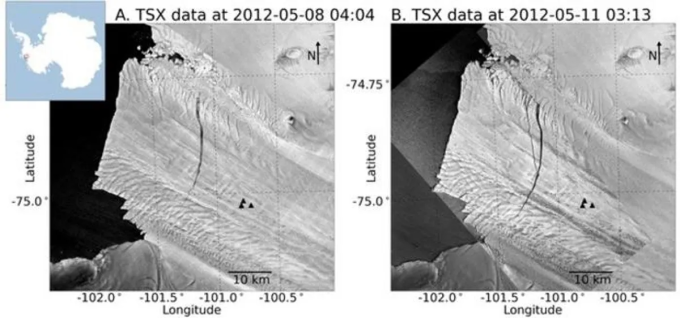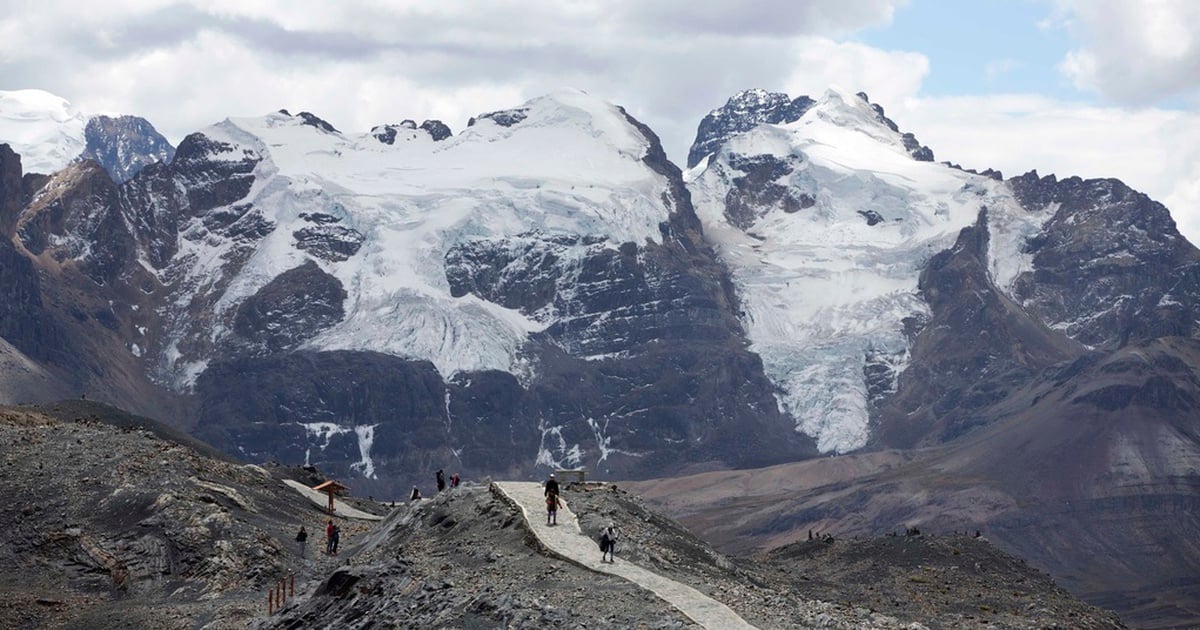Antarctica Using satellite data, experts have discovered the fastest-expanding crack in history on the ice shelf of the Pine Island Glacier.

Satellite images from May 8 (left) and May 11 (right) in 2012 show the new fault forming a Y-shaped branch to the left of the old fault. Photo: Olinger/AGU Advances
Scientists at the University of Washington have found evidence of the fastest glacier rift ever recorded, IFL Science reported on March 1. The 10.5-kilometer-long rift runs through an ice shelf in Antarctica at speeds of up to 35 meters per second, or about 128.7 kilometers per hour. The new study was published in the journal AGU Advances.
The team observed the record-breaking crack in 2012 on the ice shelf of Pine Island Glacier, Antarctica’s fastest-melting glacier, which accounts for about 25 percent of the continent’s ice loss. They found this using data from instruments on the ice shelf and radar observations from satellites.
“To our knowledge, this is the fastest rift-opening event ever observed,” said Stephanie Olinger, lead author of the study.
Rifts are cracks that run through an ice shelf. They are often a precursor to ice shelf calving, when large chunks of ice break off from a glacier and drift out to sea. Other rifts in Antarctica can form over months or years. But new research suggests that the process can also happen in a matter of seconds, especially in vulnerable areas of the continent.
“The event shows that, under certain circumstances, ice shelves can break up rapidly. It also shows that we need to pay attention to this type of activity in the future, and it tells us how to represent such cracks in large-scale ice sheet models,” Olinger explained.
Understanding how glaciers break up can help scientists better understand how climate change is affecting the ice sheets. Glacier ice may seem like a solid in the short term, but over the long term it behaves like a flowing liquid.
“Before we can improve the performance of large-scale ice sheet models and improve predictions of future sea level rise, we must have a good, physically based understanding of the processes that influence ice shelf stability,” Olinger said.
Thu Thao (According to IFL Science )
Source link



![[Photo] Looking back at the impressive moments of the Vietnamese rescue team in Myanmar](https://vstatic.vietnam.vn/vietnam/resource/IMAGE/2025/4/11/5623ca902a934e19b604c718265249d0)
![[Photo] "Beauties" participate in the parade rehearsal at Bien Hoa airport](https://vstatic.vietnam.vn/vietnam/resource/IMAGE/2025/4/11/155502af3384431e918de0e2e585d13a)




























![[Photo] Summary of parade practice in preparation for the April 30th celebration](https://vstatic.vietnam.vn/vietnam/resource/IMAGE/2025/4/11/78cfee0f2cc045b387ff1a4362b5950f)




























































Comment (0)